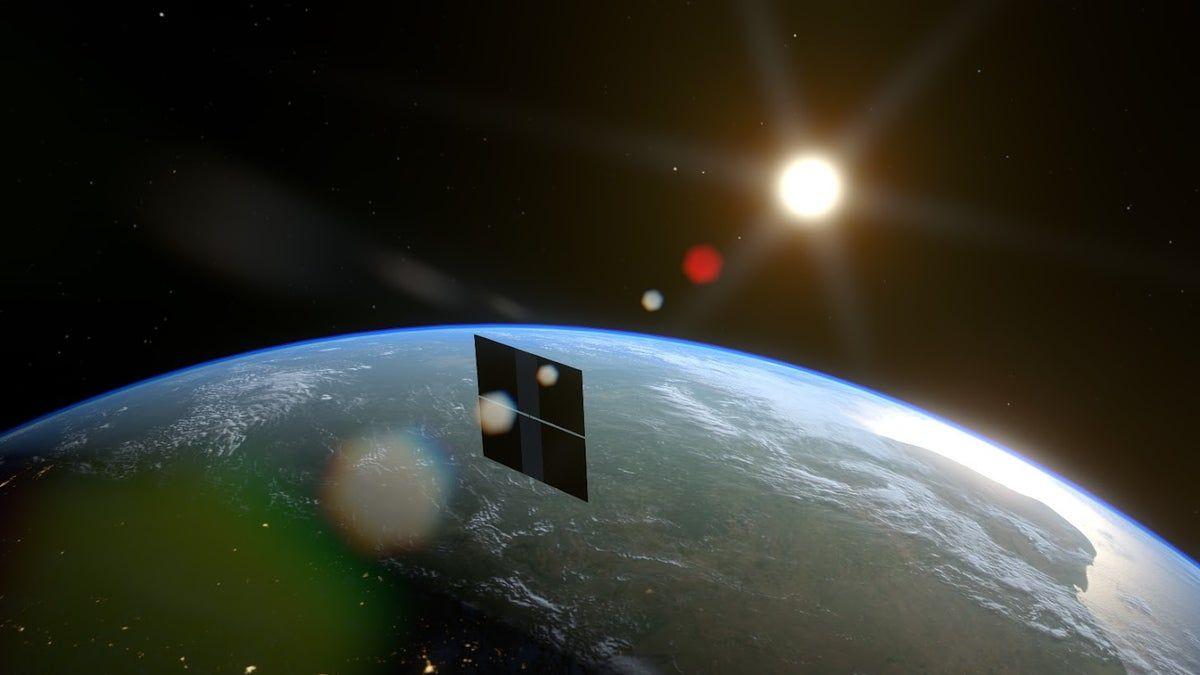Space-Based Data Centers Gain Momentum as Tech Giants Eye Orbital Computing Solutions
5 Sources
5 Sources
[1]
Elon Musk on data centers in orbit: "SpaceX will be doing this
As artificial intelligence drives the need for vastly more computing storage and processing power, interest in space-based data centers has spiked. Although several startup companies, such as Starcloud, have begun to address this problem, the idea has also attracted the interest of tech barons. In May, it emerged that former Google chief executive Eric Schmidt acquired Relativity Space due to his interest in space-based data centers. Then, earlier this month, Amazon founder Jeff Bezos predicted that gigawatt-scale data centers will be built in space within the next 10 to 20 years. Now, Elon Musk, whose SpaceX owns and operates significantly more space-based infrastructure than any other company or country in the world, has also expressed interest in the technology. Scaling up V3 satellites After Ars wrote a story on the potential of autonomous assembly to construct large data centers in space, Musk responded on X by saying that Starlink satellites could be used for this purpose. "Simply scaling up Starlink V3 satellites, which have high speed laser links would work," he said on the social media site X. "SpaceX will be doing this." Musk's interest in space-based data centers significantly raises the profile of the nascent industry. Proponents of the idea say the advantages are clear: free, limitless power from the Sun and none of the messy environmental costs of building these facilities on Earth (where opposition is starting to grow). Critics say it is economically impractical to build these facilities in space and that supporters underestimate the technology needed to make it work. SpaceX's Starlink constellation has already defied some of this conventional wisdom by delivering high-speed broadband to millions of customers around the world while making a profit. So if Musk believes the Starlink architecture can be applied to data centers, it will be difficult for the industry to ignore. Interest is growing rapidly "The amount of momentum from heavyweights in the tech industry is very much worth paying attention to," said Caleb Henry, director of research at Quilty Space, in an interview. "If they start putting money behind it, we could see another transformation of what's done in space." The essential function of a data center is to store, process, and transmit data. Historically, satellites have already done a lot of this, Henry said. Telecommunications satellites specialize in transmitting data. Imaging satellites store a lot of data and then dump it when they pass over ground stations. In recent years, onboard computers have gotten more sophisticated at processing data. Data centers in space could represent the next evolution of that. Critics rightly note that it would require very large satellites with extensive solar panels to power data centers that rival ground-based infrastructure. However, SpaceX's Starlink V3 satellites are unlike any previous space-based technology, Henry said. A lot more capacity SpaceX's current Starlink V2 mini satellites have a maximum downlink capacity of approximately 100 Gbps. The V3 satellite is expected to increase this capacity by a factor of 10, to 1 Tbps. This is not unprecedented in satellite capacity, but it certainly is at scale. For example, Viasat contracted with Boeing for the better part of a decade, spending hundreds of millions of dollars, to build Viasat-3, a geostationary satellite with a capacity of 1 Tbps. This single satellite may launch next week on an Atlas V rocket. SpaceX plans to launch dozens of Starlink V3 satellites -- Henry estimates the number is about 60 -- on each Starship rocket launch. Those launches could occur as soon as the first half of 2026, as SpaceX has already tested a satellite dispenser on its Starship vehicle. "Nothing else in the rest of the satellite industry that comes close to that amount of capacity," Henry said. Exactly what "scaling up" Starlink V3 satellites might look like is not clear, but it doesn't seem silly to expect it could happen. The very first operational Starlink satellites launched a little more than half a decade ago with a mass of about 300 kg and a capacity of 15Gbps. Starlink V3 satellites will likely mass 1,500 kg.
[2]
NVIDIA's H100 GPU Takes Data Centers to Space
The GPU, featuring an 80GB RAM, is a hundred times more powerful than any computer ever flown in space. It will test a range of AI processing applications including analyzing Earth observation images and running a large language model by Google. The test flight, on board of the Starcloud-1 satellite by Redmond, Virginia-based start-up Starcloud, is the first step in an ambitious plan to move the world's power-hungry data-crunching infrastructure to space. Proponents think the idea makes sense: far above the planet, in the emptiness of space, data centers wouldn't take up precious land, or take up as much energy and water for cooling. They wouldn't release warming greenhouse gases into the atmosphere either. NVIDIA chips have been to space before. The Jetson machine learning computing board has flown on several experimental and Earth-observing small satellites. But H100 test flight opens an entirely new chapter for AI data-processing in space, paving the way for commercial services to start as early as next year. "The H-100 is about 100 times more powerful than any GPU computer that has been on orbit before," Philip Johnston, CEO and co-founder of Starcloud, told IEEE Spectrum. "It will be the first time that a terrestrial-grade data center GPU will be flown and operated in orbit." The three-year mission will launched on SpaceX's Bandwagon 4 Falcon 9 flight. The 60-kilogram Starcloud-1 satellite will orbit Earth in a very low orbit at an altitude of about 350 kilometers. While there, it will be receiving data from a fleet of synthetic aperture radar (SAR) Earth-observing satellites operated by U.S. company Capella, process it in real time and beam insights to Earth. "Downlinking SAR data has historically been a huge problem because it's extremely voluminous," said Johnston. "But being able to process it in orbit will mean that we can only downlink the insight. The insight might be that there is a vessel at a certain location moving at a certain speed and in a certain direction. That will be just a one-kilobyte packet versus the hundreds of gigabytes you would need to downlink the data." But orbital processing of data from Earth-orbiting satellites is only one part of Starcloud's vision. The company thinks that with advances in rocket technology, especially with the cost reductions expected from SpaceX' Starship, future large-scale computing infrastructure could be placed in orbit rather than taking up precious space on Earth. "As the energy demands of AI development increase, orbital data centers represent a transformative environmental breakthrough -- cutting greenhouse gas emissions by orders of magnitude and eliminating the need for advanced cooling," Josh Parker, Head of Sustainability at NVIDIA told IEEE Spectrum in an email. "By harnessing low-cost, nonstop solar energy and avoiding land use and fossil-fuels, Starcloud's technology allows data centers to expand rapidly and sustainably, helping protect Earth's climate and critical natural resources as digital infrastructure grows." According to the United Nations Environmental Program (UNEP), the world's data-crunching infrastructure is set to consume as much electricity by 2030 as the entire state of Japan. Data centers also require enormous amounts of water for cooling -- a single one-megawatt data center consumes as much water as about one thousand people living in the developed world, UNEP data suggests. The demand for computing continues to grow in step with advances in AI and so does data centers' hunger for consumables. The impacts are most intensely felt by communities in the vicinity of these sites, which are increasingly concerned about rising cost and disruptions to power and water supplies. Moving data centers to space could solve these problems, proponents of the technology think. "My expectation is that within 10 years, almost all new data centers will be built in space purely because of the constraint that we're facing on energy terrestrially," said Johnston. Making data centers on Earth run on fully green energy requires major investments into solar power generation and battery storage systems, he said. In space, no battery storage is needed as sunlight is available 24/7. On top of that, each solar panel produces eight times as much electricity as its equivalent on Earth, which further decreases the cost, he added. "The only additional cost we have in space is the launch," Johnston said. "We see a breakeven with launch cost of around $500 per kilo. With Starship, we're expecting launch costs much lower." Per kilo launch prices for SpaceX's Starship, once the mega-rocket is fully operational, are estimated to range from $150 to as little as $10. The launcher has so far completed six successful flights and is expected to send the first batch of satellites to orbit next year. Starcloud is already planning its next mission, hoping to launch a ten-times more powerful data center than Starcloud-1 to space next year. The Starcloud-2 mission will be fitted with NVIDIA's Blackwell GPU and several H100s. That mission, providing 7 kilowatts of computing power, is expected to provide commercial services to customers including Earth observation satellite operators and the U.S. Department of Defense, said Johnston. An even larger, 100-kilowatt satellite, should reach orbit in 2027. By the early 2030s, Starcloud thinks they can have a 40-megawatt data center in space crunching data at a cost equivalent to data centers on Earth. Starcloud is one of several companies with plans to outsource computing to space. Axiom Space unveiled similar plans earlier this year. Florida-based Lonestar Holdings sent a small data center to the Moon with the Intuitive Machines-2 mission earlier this year and envisions building up major data centers on Earth's companion in the coming years.
[3]
Self-assembling data centers in space are becoming reality as Rendezvous Robotics partners with Starcloud -- Elon Musk chimes in that 'SpaceX will be doing this'
Starcloud is already launching an AI-equipped satellite featuring an Nvidia H100 GPU into space next month. Still, it plans to build a 5-gigawatt data center eventually, and Rendezvous Robotics can be key to achieving that. Speaking to Ars Technica, co-founder Phil Frank said, "Our mission is to build things that are going to be useful in space." Data centers have become the new gold rush in the wake of the AI boom, with proponents looking to expand compute at an exponential pace that outstrips our ability to build them. They also require massive amounts of energy and cooling, potentially with detrimental effects on our environment, which we only have one of. Space, on the other hand, is virtually infinite with a free fusion reactor at the center of our solar system that never shuts down -- starting to sound like a plan, right? Lots of other companies think so, too, and are convening to explore this landmark opportunity. The challenge at hand is more difficult than it might seem because, unlike satellites or telescopes, a data center is not inherently mobile. Historically, all our efforts have been focused on building them on land with sprawling construction sites that aren't feasible outside our atmosphere. Deploying a data center in space, therefore, requires ingenuity and efficiency on a scale never sought before -- this is where Rendezvous Robotics can help. The space construction firm was born at MIT last year and emerged from stealth this September with a pre-seed round. Fast forward a few months, and now, it has just signed an agreement with Starcloud, which itself is partnered with Nvidia, to explore data center opportunities in space. All three companies are part of a coalition rethinking how computing facilities can work in a new era. Rendezvous's flagship product is a tile-based autonomous module system that can assemble itself. Essentially, tiles with their own componentry, like battery cells, processors, and more, that use electromagnets to unfurl after being deployed as a payload from a spacecraft. What you see in the picture above are the tiles stacked on top of each other, ready to separate from the rocket and build themselves out. This tech is based on MIT Media Lab's Project TESSERAE, whose architect, Ariel Ekblaw, is one of the founders of Rendezvous Robotics. NASA has already tested TESSERAE, but the founders intend to turn it into a commercial venture, selling the technology to space architecture firms (such as Starcloud). Joe Landon, the last of three co-founders, clarified that "you have to either send a person with a wrench to space to assemble, use a robotic arm and plan out every movement of that arm, or design a complicated origami folding mechanical system, which limits how big you can build." Those three techniques are what Rendezvous's work can replace, and the tech is designed to be scalable to huge sizes, perfect for the extraterrestrial dreams of AI GPUs humming alongside our satellites. As part of this agreement, Starcloud and Rendezvous will work together to tailor the tiles for the 5-gigawatt data center specifically. Speaking of which, Starcloud has said its data center will use "super-large solar and cooling panels approximately 4 kilometers in width and length," which are astronomically larger than anything humans have built before. Ars Technica calculated that the International Space Station's solar arrays -- the largest ever deployed in space -- are only 0.005% the size of what Starcloud is planning to build. This is why autonomous assembly becomes a necessity; at this scale, conventional techniques (as if anything space-related were typical) lag eons behind, and AI money doesn't stop for anything. You can see Elon Musk's response to the original coverage above, claiming that Starlink's V3 satellites "will be doing this," and it seems to be relatively easy, too. The currently in-orbit V2 satellites cap out at a maximum data transmission rate of 100 Gbps, which the upcoming V3 satellites will increase to 1 Tbps. Through Starlink, SpaceX has already demonstrated it can deliver high-speed internet to even remote parts of the globe, so it's not entirely unprecedented that hyperscale data centers are on the world's richest person's mind. Unlike Starcloud and Rendezvous Robotics, though, we'll need more details here before speculating on what the future holds.
[4]
Elon Musk: Future Starlink Satellites Will Become Orbiting Data Centers
When he's not battling bugs and robots in Helldivers 2, Michael is reporting on AI, satellites, cybersecurity, PCs, and tech policy. Don't miss out on our latest stories. Add PCMag as a preferred source on Google. Starlink satellites are best known for supplying high-speed internet, but SpaceX CEO Elon Musk is suggesting they might one day also be used as orbiting data centers. Creating a network of orbiting data centers would be no easy task. But according to Musk, SpaceX already has a foundation with the company's next-generation V3 Starlink satellites, which are designed to beam gigabit internet. "Simply scaling up Starlink V3 satellites, which have high-speed laser links, would work," he tweeted. "SpaceX will be doing this." This comes amid growing discussions about building power-hungry AI data centers in space to mitigate the environmental impact on Earth. SpaceX's proposed V3 satellites require SpaceX's Starship vehicle for launch, which is still in testing. An earlier regulatory filing from the company indicates that each V3 could weigh up to 2,000 kilograms (4,409 pounds), or almost four times the current mass of the V2 Mini Starlink satellites. Musk's tweet suggests SpaceX could make them even larger to host more built-in computing. A customer could then remotely connect to the Starlink satellites -- which already possess high-speed connectivity -- and run AI training workloads. Musk's reference to the high-speed laser links is also notable. One key challenge with operating any data center in space is remotely connecting to it, especially when the data center is continually circling the Earth, in and out of view for customers on the ground. However, SpaceX has already developed a solution using the built-in laser system on existing Starlink satellites, enabling them to transmit data at up to 200Gbps, thereby creating a mesh network in space. We'll have to wait and see how SpaceX's data center plans shake out at a time when the company already has its hands full with developing the Starship vehicle and sending humans to the Moon and Mars. In the meantime, a startup called Starcloud plans to launch its own test satellite into space, which will carry an Nvidia H100 GPU for AI training. The goal is to build a network of orbiting data centers that can connect to Starlink while harnessing the Sun as a natural power source. The test satellite is scheduled to fly on a SpaceX Falcon 9 rocket on Nov. 2, Starcloud's CEO says.
[5]
Elon Musk's Solution to Data Centers: Just Put Them in Space
Elon Musk claimed on October 31 that SpaceX will be sending data centers into space. He responded to a post on X from journalist Eric Berger about the viability of the concept. "Simply scaling up Starlink V3 satellites, which have high speed laser links would work," he wrote on X. "SpaceX will be doing this." As AI tools proliferate, so does demand for quick outputs. But it takes significant energy for AI models to function at the speed and quality that we want it to -- both AI training and inference rely on data centers. The data centers that host the GPUs powering these functions are expanding, and with it the amount of electricity needed to operate and cool them. The environmental impact of new technology is increasingly an issue. So why not just move those data centers to space? Musk says that SpaceX's satellites could incorporate the computing power for data centers. The company's Starlink satellites currently provide global broadband internet service, orbiting at 550 km from Earth. They're closer than other satellites, meaning latency is much lower at around 25 milliseconds compared to over 600 ms. The company's upcoming V3 satellites are designed to provide gigabit-class internet speeds and could reportedly weigh up to 4,409 pounds. Musk says they could be made even larger to host the data centers. Still, they need Starship, SpaceX's enormous rocket, for launch. Starship has had an explosion-filled history but recently had a good launch (its eleventh) in October. Startup Starcloud is also on a mission to send data centers into space. The Redmond, Washington-based company is about to launch its Starcloud-1 satellite, carrying NVIDIA's H100 GPU. It's expected to offer 100 times more powerful GPU computing than any other space-based operation. The company hopes it's a step toward its goal of building five-gigawatt orbital data centers around 2.5 miles wide. "The only environmental cost is the launch," said Philip Johnston, Starcloud CEO. "After that, we could save 10 times the carbon emissions compared with running data centers on Earth."
Share
Share
Copy Link
Elon Musk announces SpaceX's plans to develop space-based data centers using scaled-up Starlink V3 satellites, joining other tech leaders in addressing AI's growing energy demands through orbital computing infrastructure.
Tech Giants Rally Behind Space-Based Computing
The concept of space-based data centers has rapidly gained traction among technology industry leaders, with Elon Musk becoming the latest high-profile advocate. Following predictions by Amazon founder Jeff Bezos that gigawatt-scale data centers will be built in space within 10 to 20 years, and former Google CEO Eric Schmidt's acquisition of Relativity Space for similar purposes, Musk announced on X that SpaceX will pursue orbital computing infrastructure
1
."Simply scaling up Starlink V3 satellites, which have high speed laser links would work," Musk stated. "SpaceX will be doing this." This endorsement from the owner of the world's largest space-based infrastructure significantly elevates the profile of what was previously considered a niche startup sector
1
.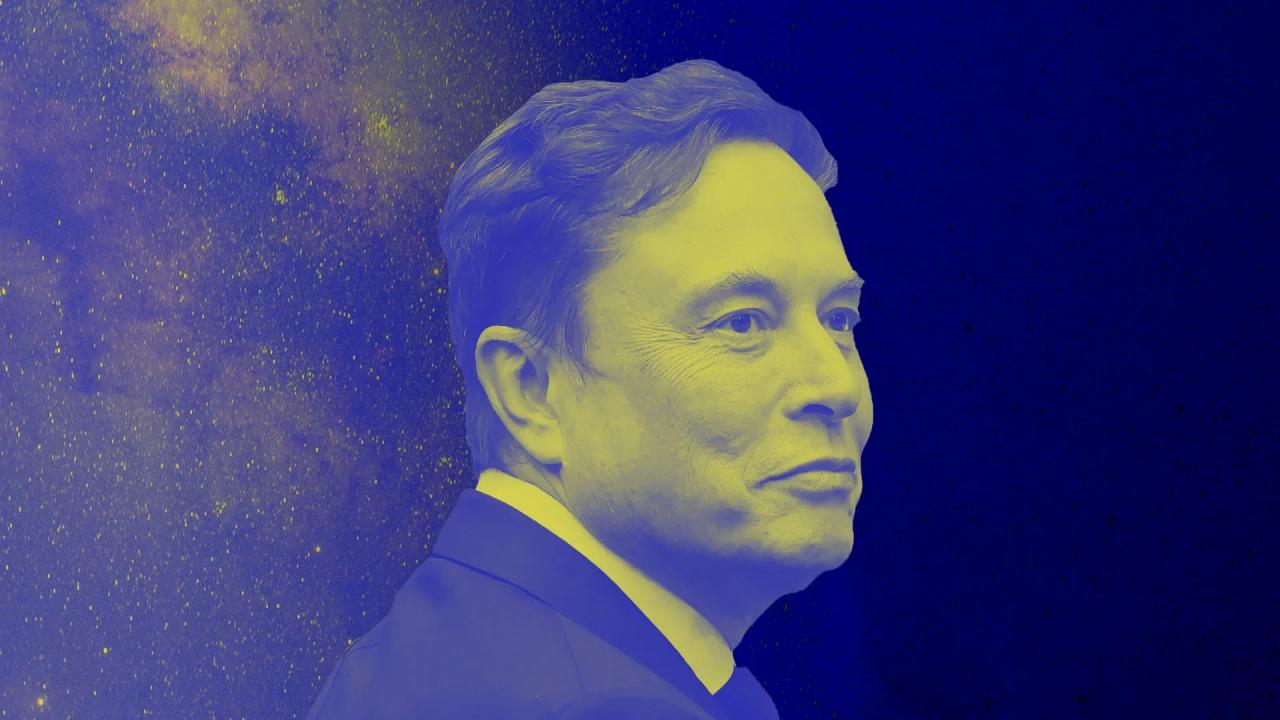
Source: Inc.
NVIDIA H100 Pioneers Orbital AI Processing
Startup Starcloud is leading the practical implementation of space-based computing with its upcoming Starcloud-1 satellite mission. The 60-kilogram satellite will carry NVIDIA's H100 GPU featuring 80GB RAM, representing a hundred-fold increase in computing power compared to any previous space-based system
2
. The three-year mission, launching on SpaceX's Bandwagon 4 Falcon 9 flight, will orbit at 350 kilometers altitude."The H-100 is about 100 times more powerful than any GPU computer that has been on orbit before," said Philip Johnston, Starcloud's CEO and co-founder. "It will be the first time that a terrestrial-grade data center GPU will be flown and operated in orbit"
2
. The satellite will process synthetic aperture radar data from Capella's Earth-observing satellites in real-time, demonstrating the practical applications of orbital computing.Environmental Imperatives Drive Innovation
The push toward space-based data centers stems from mounting environmental concerns about terrestrial computing infrastructure. According to the United Nations Environmental Program, global data-crunching infrastructure is projected to consume as much electricity as Japan by 2030. Additionally, a single one-megawatt data center consumes as much water as approximately 1,000 people in developed nations
2
."As the energy demands of AI development increase, orbital data centers represent a transformative environmental breakthrough -- cutting greenhouse gas emissions by orders of magnitude and eliminating the need for advanced cooling," explained Josh Parker, Head of Sustainability at NVIDIA
2
. Space-based facilities would harness continuous solar power without requiring battery storage, with each solar panel producing eight times more electricity than Earth-based equivalents.Related Stories
Autonomous Assembly Enables Massive Scale
The technical challenges of building large-scale data centers in space have prompted innovative solutions in autonomous construction. Rendezvous Robotics, emerging from MIT stealth mode, has partnered with Starcloud to develop self-assembling tile-based modules using electromagnets
3
.Starcloud's ambitious plans include a 5-gigawatt data center with "super-large solar and cooling panels approximately 4 kilometers in width and length" – vastly exceeding the International Space Station's solar arrays, which represent only 0.005% of the planned scale
3
.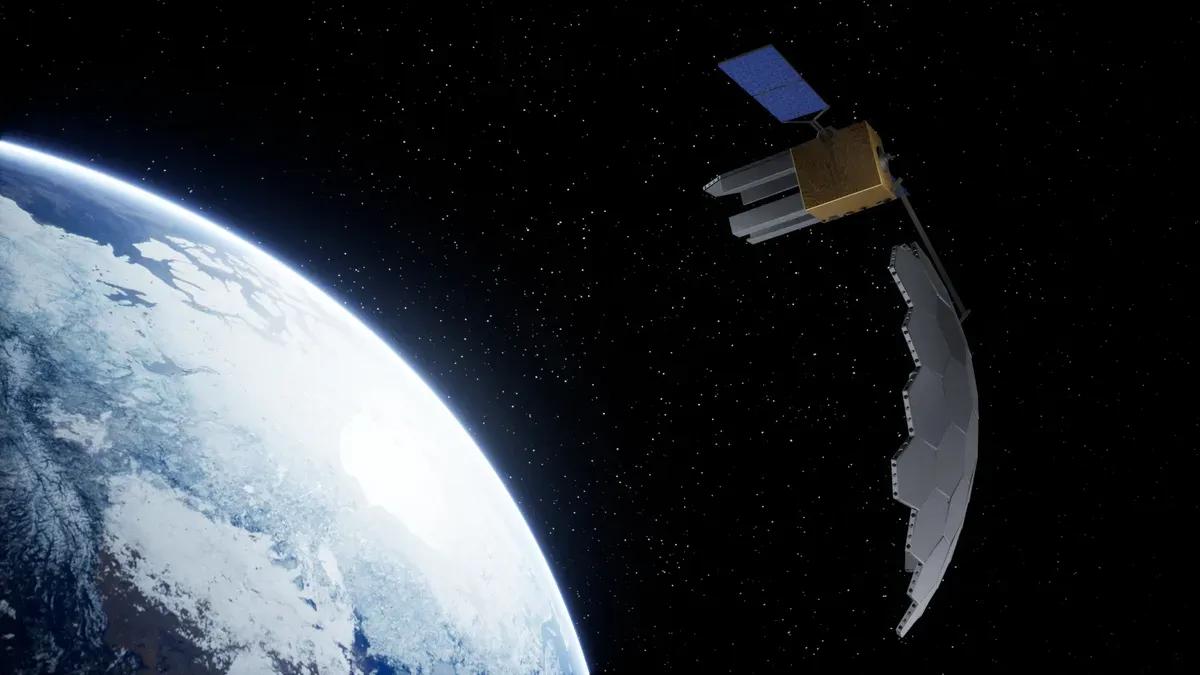
Source: Tom's Hardware
Starlink Architecture Provides Foundation
SpaceX's Starlink constellation offers a proven model for space-based infrastructure that could be adapted for computing purposes. Current Starlink V2 mini satellites achieve maximum downlink capacity of approximately 100 Gbps, while the upcoming V3 satellites are expected to increase this capacity tenfold to 1 Tbps
1
.The V3 satellites, weighing up to 2,000 kilograms compared to current V2 Mini satellites at 300 kg, will require SpaceX's Starship vehicle for deployment. SpaceX plans to launch approximately 60 V3 satellites per Starship mission, with launches potentially beginning in the first half of 2026
4
. The existing laser link system already enables data transmission at up to 200 Gbps, creating a mesh network in space that addresses connectivity challenges for orbital computing4
.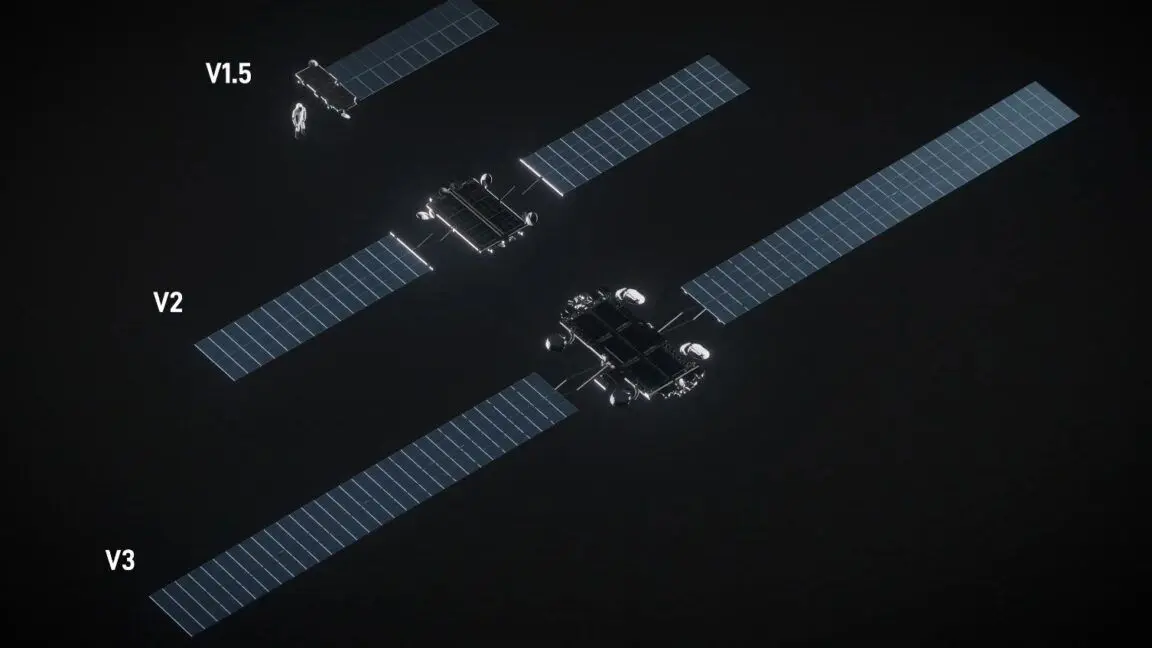
Source: Ars Technica
References
Summarized by
Navi
[1]
[3]
Related Stories
Google Announces Project Suncatcher: Ambitious Plan for AI Data Centers in Space
04 Nov 2025•Technology

AI Trained in Space as Tech Giants Race to Build Orbiting Data Centers Powered by Solar Energy
11 Dec 2025•Technology
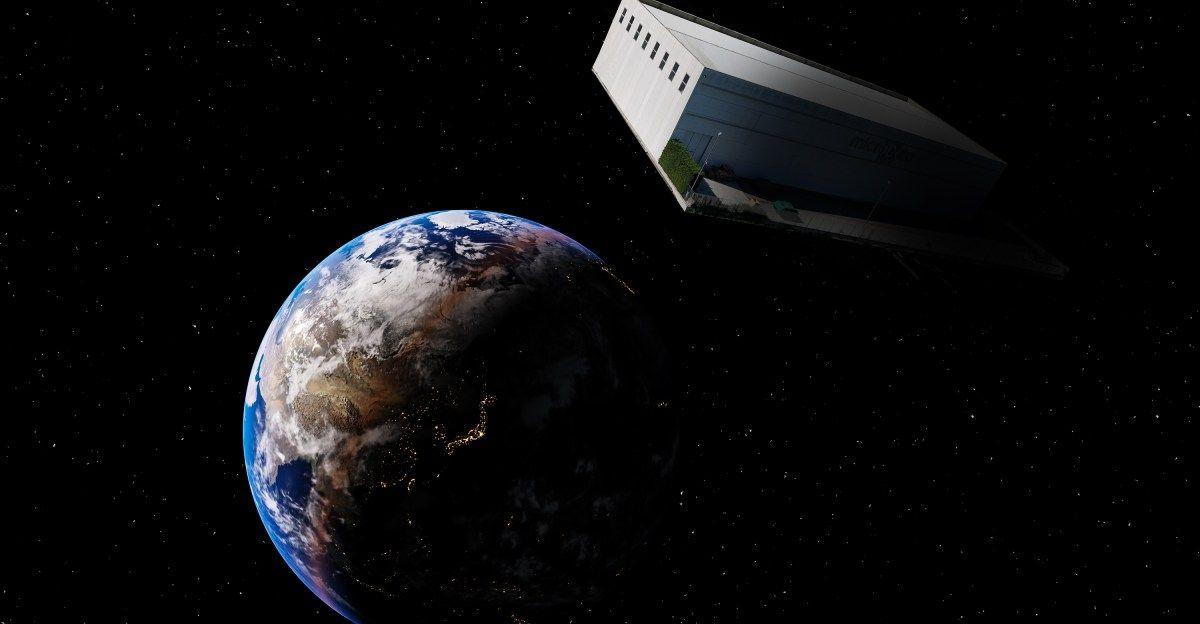
Nvidia H100 GPUs Set to Launch Into Orbit as Startups Pioneer Space-Based AI Data Centers
22 Oct 2025•Technology
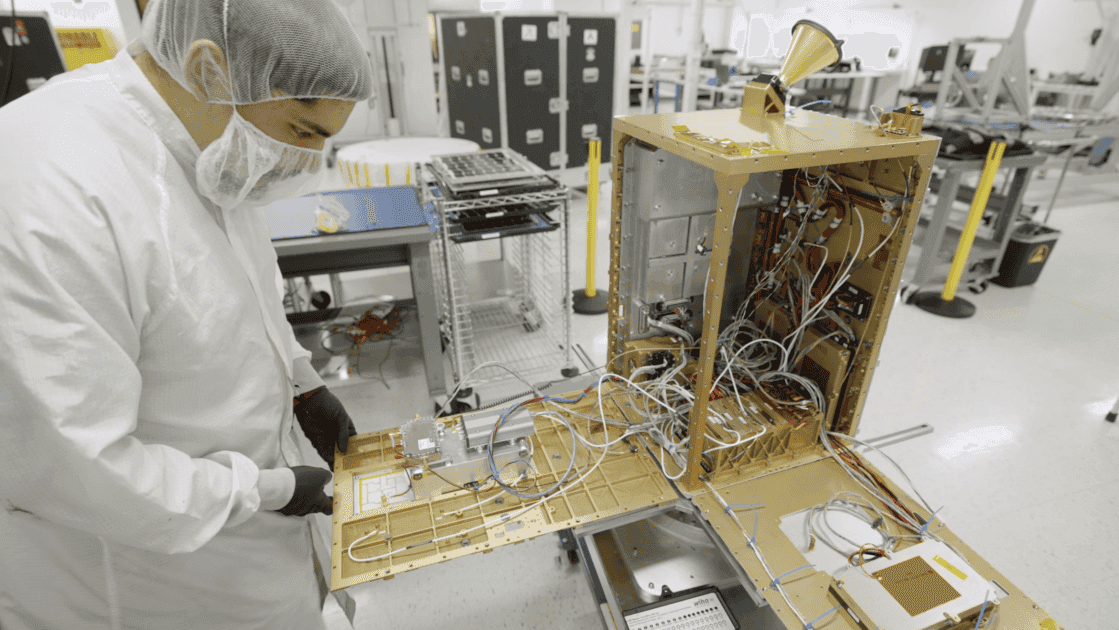
Recent Highlights
1
Google launches Gemini 3 Flash as default AI model, delivering speed with Pro-grade reasoning
Technology

2
OpenAI launches GPT Image 1.5 as AI image generator war with Google intensifies
Technology

3
OpenAI launches ChatGPT app store, opening doors for third-party developers to build AI-powered apps
Technology

